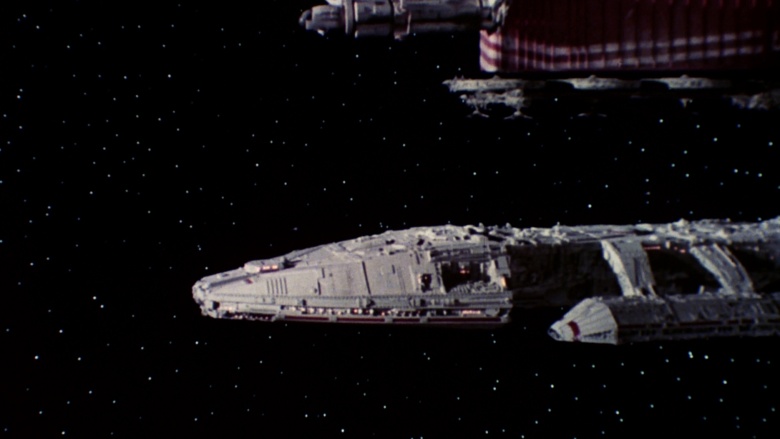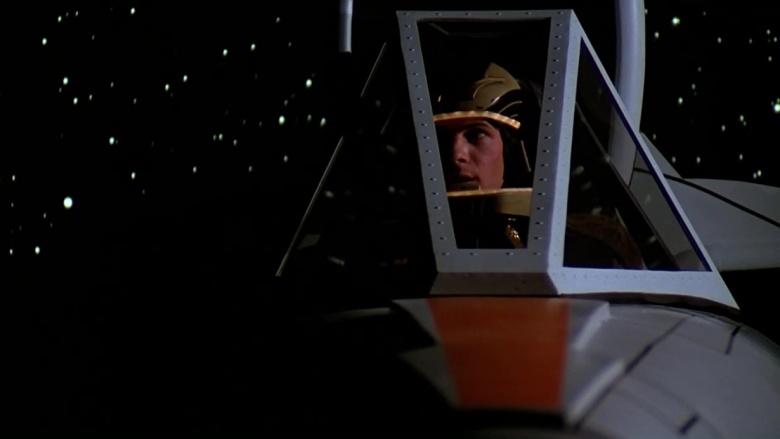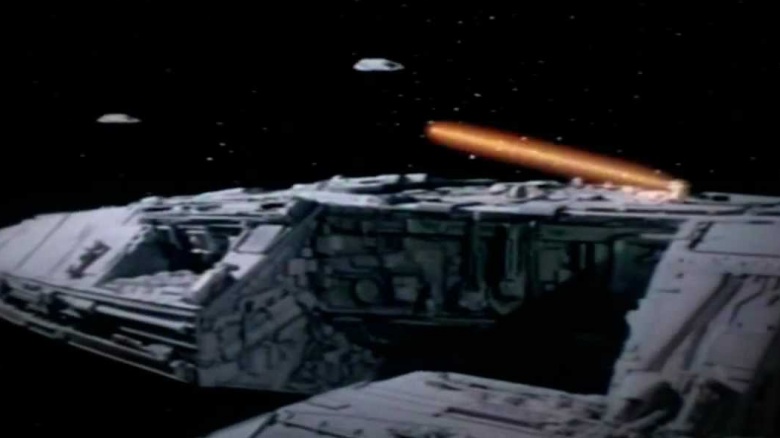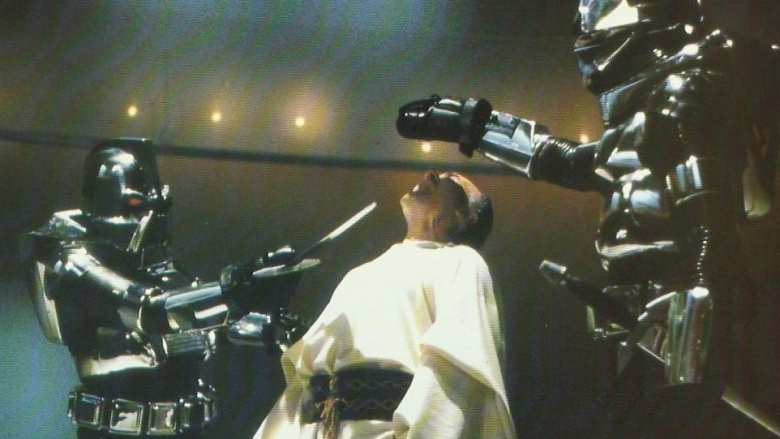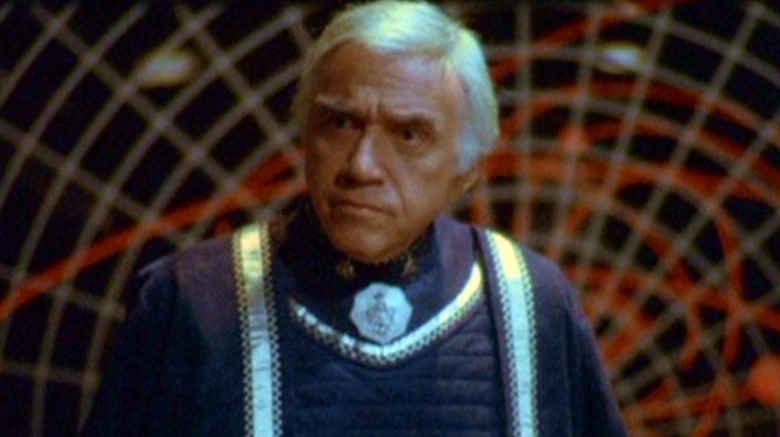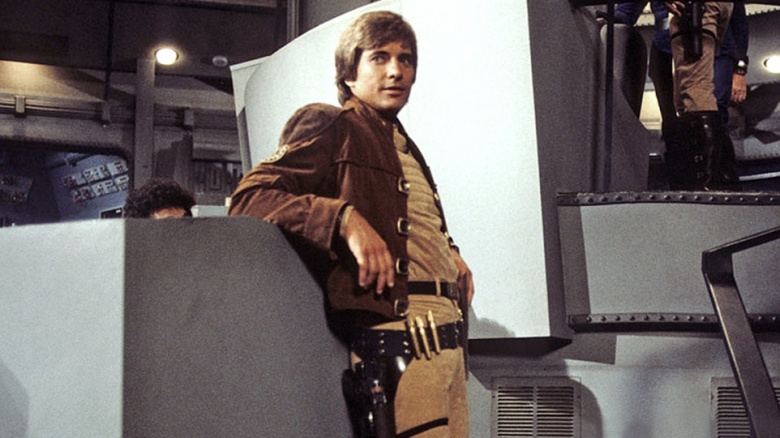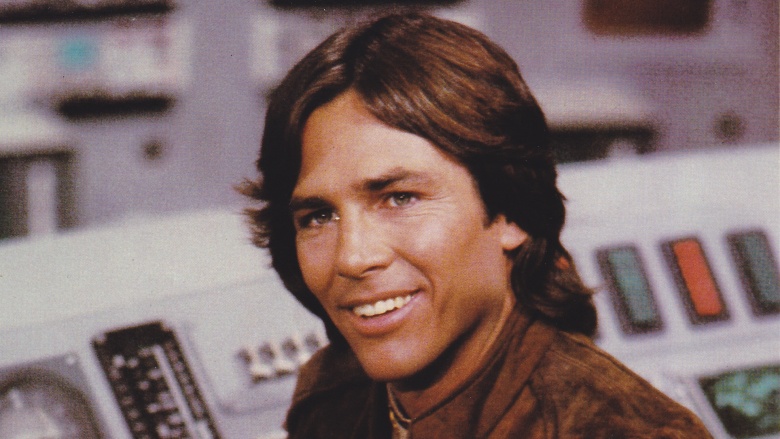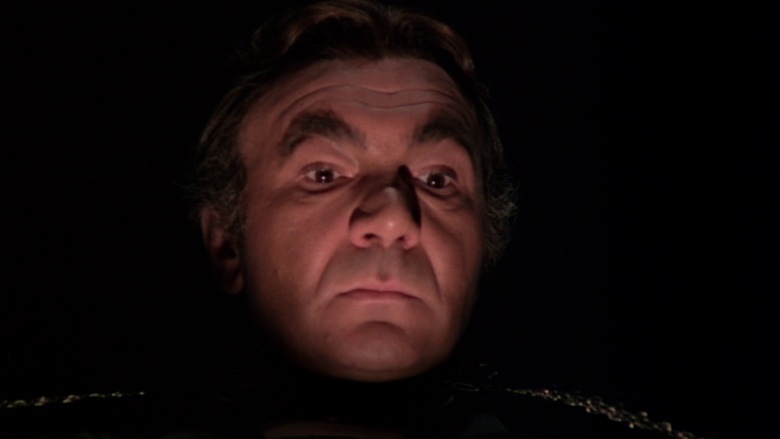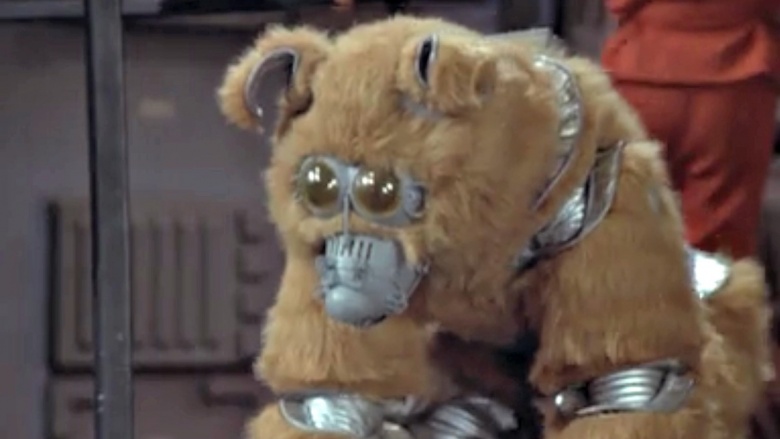How Battlestar Galactica Ripped Off Star Wars
After Star Wars conquered the box office in 1977, every studio wanted its own space-based sci-fi hit, and some were more obviously inspired than others. Here are a number of ways in which the original Battlestar Galactica, which ran for a single season on ABC from 1978 to 1979, seemed to borrow characters, plot points, and ideas from George Lucas' galaxy far, far away.
The effects
Obviously, working with a TV-sized budget meant that Battlestar Galactica creator Glen Larson wouldn't be able to compete with Star Wars, but he did his level best, including hiring Star Wars effects lead John Dykstra to mastermind the show's visuals. Dykstra didn't stick around long, soon quitting in frustration over the shifting demands of a weekly series, but his participation gave extra ammo to those who viewed Galactica as little more than an attempt to cash in on the Star Wars craze.
The aesthetic
Star Wars studio 20th Century Fox sued Universal, the studio behind Battlestar Galactica, claiming Larson had intentionally ripped off more than two dozen ideas from the film, including their shared overall aesthetic, which imagined a future in which spaceships would look every bit as roughed-up and dingy as your average battleship. Prior to Star Wars, most sci-fi movies offered viewers a far sleeker, cleaner version of space travel, so Galactica's more down-to-earth approach was seen as a clear (and probably cost-effective) lift.
The (original) title
During development, Battlestar Galactica's working title was Star Worlds...something that had to be changed, obviously, once Star Wars stormed the box office. It ended up with a better title in the end, but creator Glen Larson also had to make certain other concessions along the way, including agreeing to depict lasers without the visual "streaks" seen in Star Wars.
The concept
Battlestar Galactica's plot isn't a direct carbon copy of the Star Wars storyline, but the rough outline is pretty much the same. The ragtag remnants of a once-proud society are fighting for survival against an authoritarian regime that's better equipped and stronger in number. Admittedly, that's the essential setup for any number of stories, but arriving so closely on the heels of Star Wars—and being so similar in plenty of other ways—Battlestar Galactica didn't do itself any favors by reusing narrative components. "Star Wars was fun and I enjoyed it," legendary sci-fi author Isaac Asimov famously quipped. "But Battlestar Galactica was Star Wars all over again, and I couldn't enjoy it without amnesia."
Adama might as well have been Obi-Wan
A wise old warrior who's deeply spiritual, trained in telekinesis, and remains a decimated society's last, best defense against an authoritarian regime...sound familiar? Battlestar Galactica's Commander Adama was played by Lorne Greene, but he might as well have been played by Alec Guinness, because the character was pretty much Obi-Wan Kenobi. Granted, there were some key differences: Adama was a military leader leading a fleet of ships across the galaxy, not a wizened Jedi hiding out in the desert. But the two veteran leaders fulfilled roughly the same function.
Starbuck was basically Han Solo
There's nothing quite like a rogue with a heart of gold, and with Han Solo in Star Wars, George Lucas took that old archetype to a whole new level, thanks largely to the gruff, wisecracking charm that Harrison Ford brought to the role. Battlestar Galactica obviously didn't have access to Ford or Solo, so they found a TV-sized replacement, hiring Dirk Benedict to play Starbuck, a womanizing, cigar-smoking fighter pilot who added his own excitement and much-needed levity to the space opera proceedings.
Apollo and Luke Skywalker had a lot in common
Luke Sywalker's family saga is the heart of the original Star Wars trilogy, and a variant of that dynamic played out during Battlestar Galactica. Like the young, noble, and kinda dull Skywalker, Galactica's Captain Apollo has an impressive pedigree (his dad is Commander Adama) and his family is haunted by a tragic past (his mother and brother were killed by the evil Cylons). Both heroes also had a fondness for more morally ambiguous friends; like Luke, who palled around with Han Solo, Apollo was best buds with the far more interesting Starbuck.
Just call him "Darth Baltar"
Battlestar Galactica's chief antagonists are the Cylons, an army of robots bent on wiping out all traces of humanity, who have the help of a traitorous human named Count Baltar, whose defining act of betrayal resulted in the destruction of the Twelve Colonies of Man. For much of the series, Baltar is in command of a Cylon fleet dedicated to hunting down the last band of humans, much like Star Wars bad guy Darth Vader, who, as we're told in the first film, started his rise to galactic villainy by betraying and murdering Luke Sywalker's father Anakin.
"Muffit" equals "Droid"
Quirky robots and space critters were sci-fi fixtures long before Star Wars came along, but with the irresistible droids R2-D2 and C-3PO—not to mention the towering, fur-covered Wookiee Chewbacca—George Lucas' space saga made those ingredients more de rigueur than ever. Enter Battlestar Galactica's Muffit II, a robotic, doglike creature brought on board as a companion for Apollo's stepson after the kid loses his living "daggit" to a Cylon attack. Television budgets and special effects being what they were at the time, Muffit II was actually played by a chimp in a suit.

